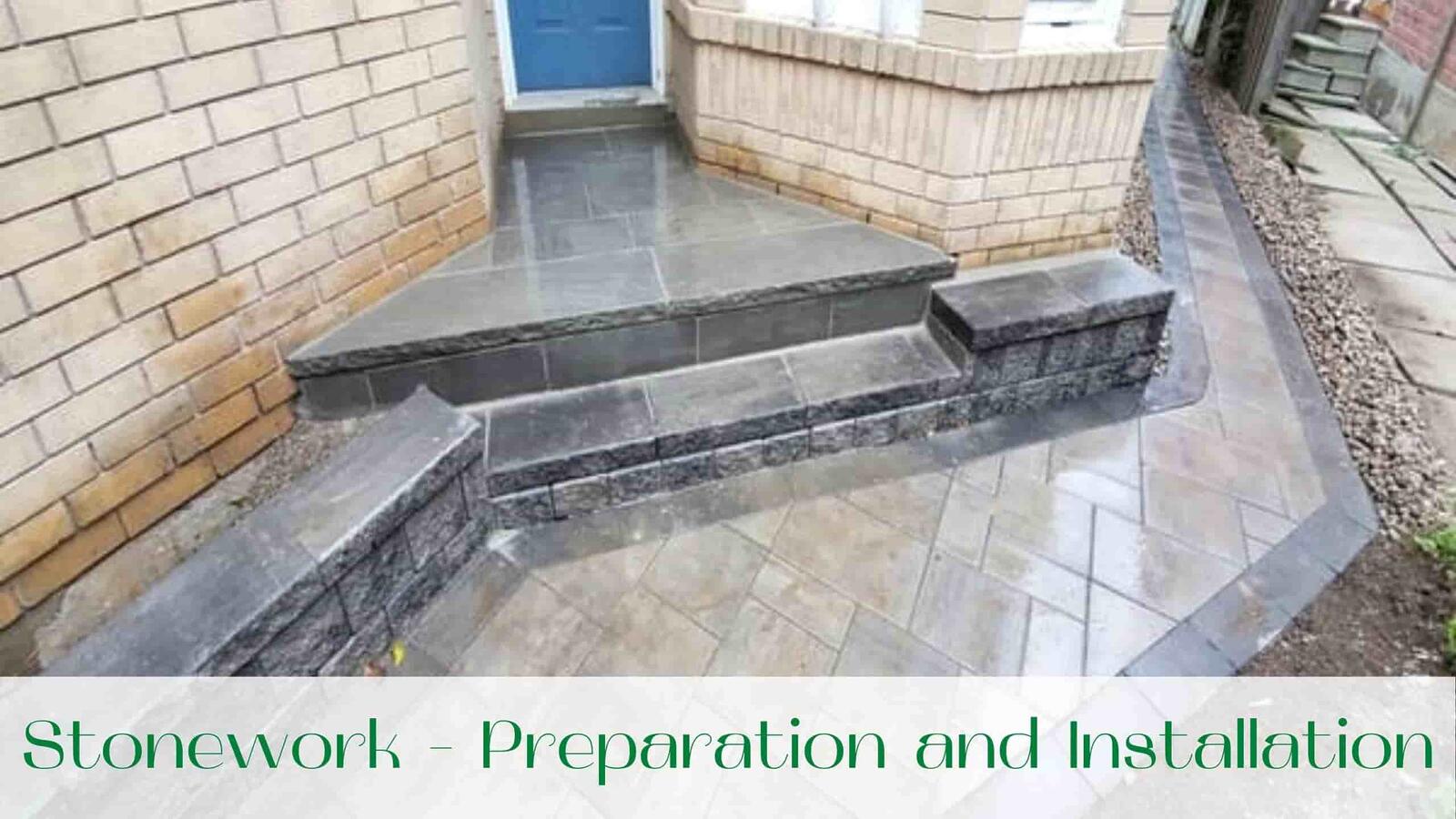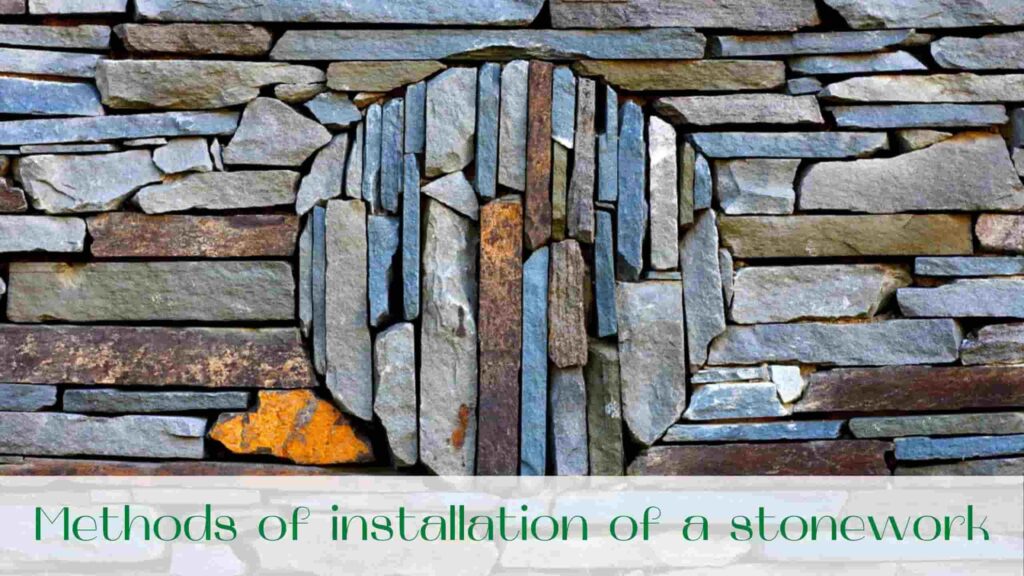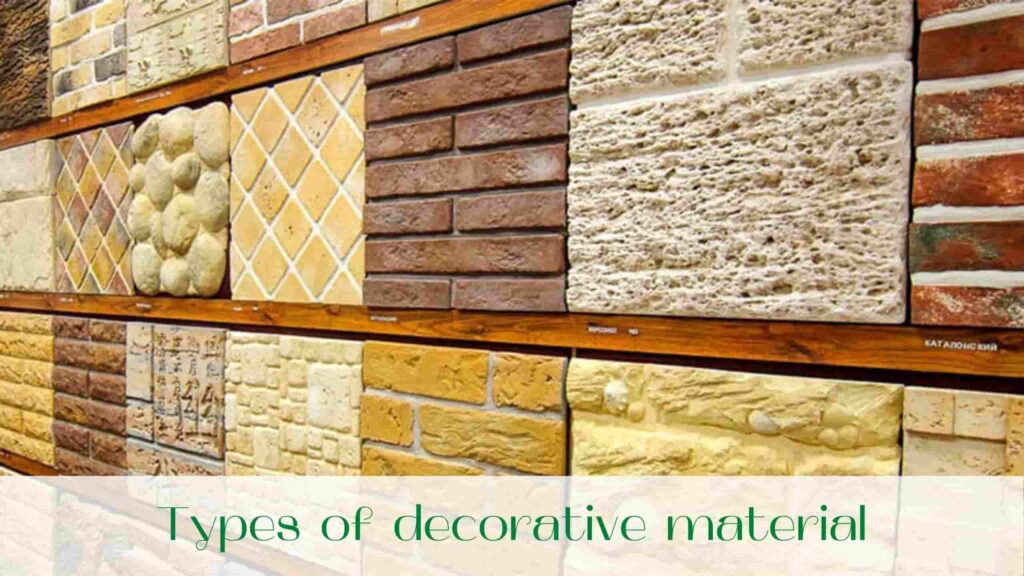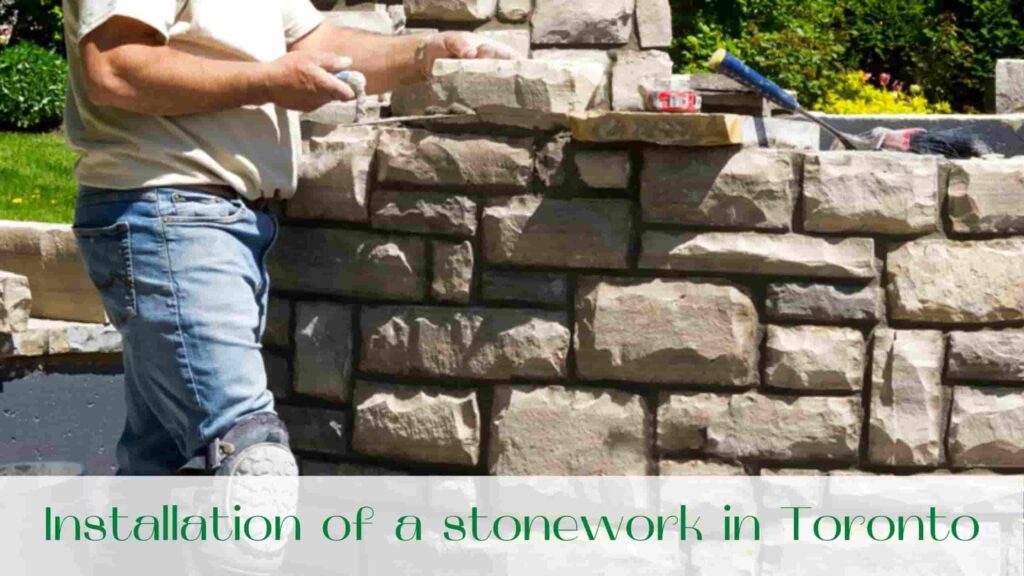
People who are not familiar with the rules of stonework in Toronto are faced with the fact that the finishing material, after holding on to the wall for some time, gradually begins to collapse. Usually the stone is applied on the glue of low quality, although often incorrectly prepared work surface leads to a collapse of the cladding.
Methods of installation of a Stonework in Toronto – 2 variants
The laying of decorative stone is performed with the use of auxiliary materials, which are selected taking into account the planned method of installation. The tiles can be fixed on the wall with the use of jointing technique or seamless method: If the material is mounted with an expansion, then simultaneously with the tile is purchased the intended for its execution solution and a special dye. The latter usually has a contrasting tone or color corresponding to the tile shade.
If the decision is made to lay the stone without using the technique of expansion, then in addition to finishing, in the shop, you need to buy only the manufacturer’s recommended adhesive and, if necessary, hydrophobic composition.
A decorative stone brick in a seamless way is easier and faster than with stitching. Finishing material should be laid tightly, which will allow you to get a virtually monolithic surface. The main thing in the process of installation – time to remove excess adhesive that protrude in the sealing of the finish, otherwise you will have to suffer later.
Dried tile glue with decorative finishing help to remove special acid-containing compositions. A greater effect can be achieved if the cleaner was released by the same manufacturer as the glue.
Despite the difficulty of laying a decorative stone with an embossing, this method is used quite often – it looks more spectacular.
They fix the decorative stone on the wall at a certain distance from each other. A perfect joint can be achieved by placing the same pieces of plasterboard or chipboard between the rows of stones. After the installation of the entire finishing material, we wait for the glue to dry and then perform the jointing.
Too wide a seam can spoil the overall impression of the decoration, which is especially noticeable if the tiles are used to create a composition with the same pattern in the apartment.
Stonework in Toronto is our company’s best offer!

Stonework in Toronto : types of decorative material – sandstone, marble, limestone
For interior decoration of residential walls, stones are used, made either on cement mortar or on plaster. The first ones are chosen for facing surfaces in rooms with a high level of humidity, for example, in the kitchen and in the bathroom. The second type of products is afraid of water, so they are used to decorate walls in the living room, bedrooms and other rooms of the house / apartment. Finished products most often imitate brick and slate.
And if the brick looks perfect in the interior of corridors, bedrooms and balconies, then due to the variety of textures of oil shale it is possible to create bright and original compositions on the walls of living rooms and hallways. As for natural materials, because of their high cost, finishing with their use is rare. Meanwhile, the following types of decorative stones have become widespread:
- sandstone – has three shades, has a granular structure;
- marble – has a wide color palette and different texture;
- limestone – differs in structure, size and color shades.
The laying of natural decorative stone on the walls has its own peculiarities, but does not differ much from the installation of artificial products. The main thing in both cases is to properly prepare the surface.
Installation of a stonework in Toronto on the walls has its own peculiarities, but does not differ much from the installation of artificial products. The main thing in both cases is to properly prepare the surface.

Installation of a stonework in Toronto
We recommend that you carefully process the stonework in Toronto before laying them on the walls. The surface to be trimmed may have different coatings, so it is prepared differently: If you want to put the tiles on the plastered walls, the places with obvious defects are plastered again. Having got rid of convexities and voids in this way, the wall is treated with a dry brush, wetted with water and dried.
We prepare very rough surfaces in a similar way. We finish the process with priming works. As a primer can be used liquid adhesive mixture. After that, after 2-3 hours, we begin to lay tiles. The wooden working surface is preinsulated using pergamine sheets, the laying of which begins from the bottom upwards (with horizontal overlap – 15 cm, vertical overlap – 5 cm). Over the vapour barrier we equip the wire mesh.
We apply a layer of cement mortar to the wire mesh, and before the surface dries out we use a dry hard brush to improve the adhesive properties of both materials. Preparation of the metal wall for decorative tiles follows the same principle as for wooden surfaces. The difference is that in the first case the mesh is fixed by nails with small flat bars or by stapler, while here the screws are more appropriate.
We remove defects on stone, concrete and brick walls with the help of puttying. If there are greasy spots on the surface, we remove them with special degreasers. For preventive purposes, we reinforce the wall, apply cement mortar over it.
If the stone surface has been painted, then before laying the tiles it is treated with a sandblasting machine. Afterwards, we install the plastering grid and apply a cement layer. If it is planned to lay the decorative stone on the gypsum plasterboard, we apply a waterproofing composition beforehand. Installation is carried out with the use of a special adhesive, as a finishing material we recommend to choose light and thin types of products (heavy stone should be laid on a double layer of gypsum plasterboard).

Award-winning Landscaping Company
CONTACT US TODAY
for a Free Estimate!
Contact us and speak with one of our service professionals to schedule a visit today!
GET A FREE QUOTE